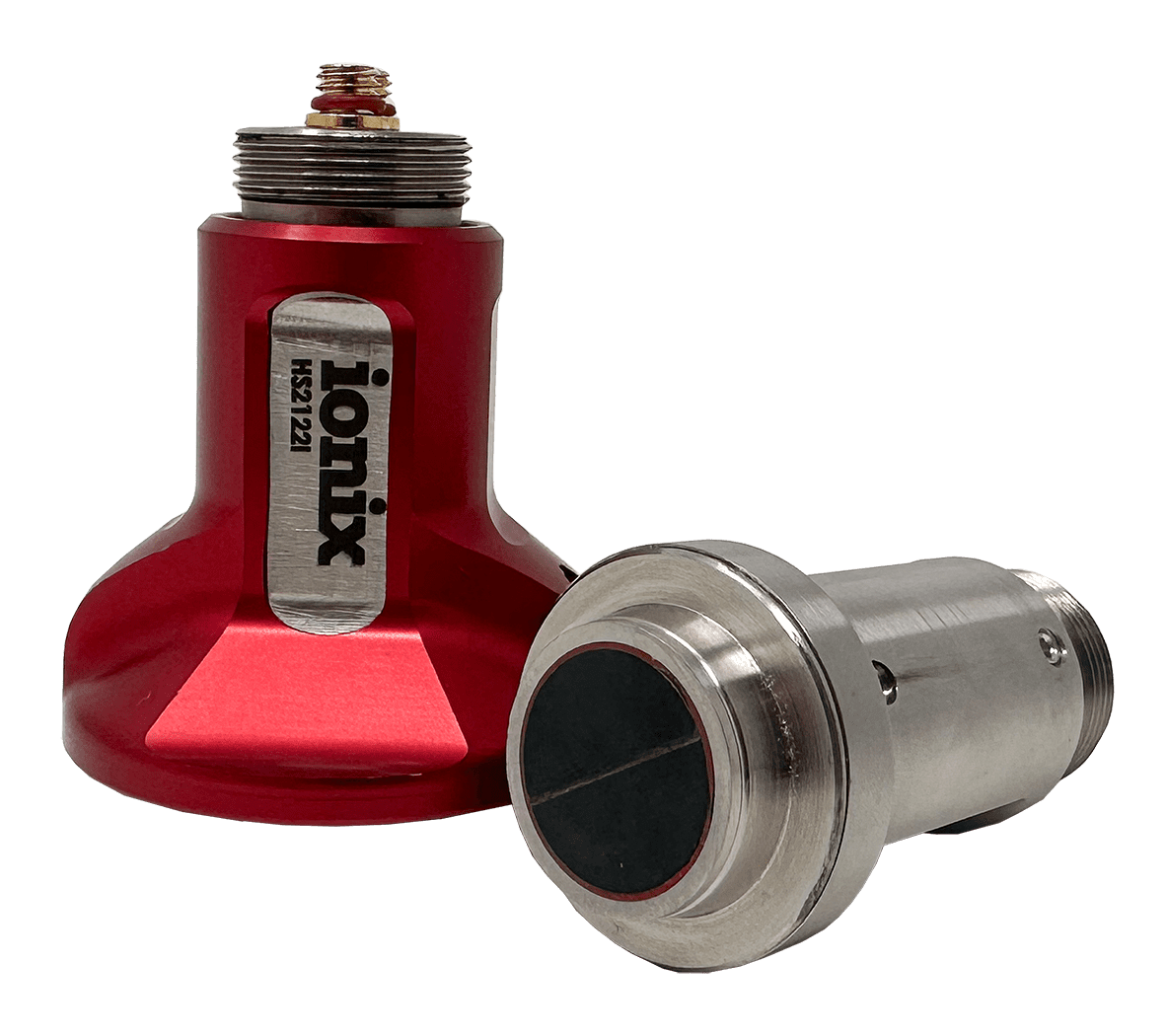
NM01HS2122i_RH(v1)
ULTRASONIC TRANSDUCER (DUAL): HS2122i, 2.5MHz, 18mm tip diameter & 18 mm diameter dual element transducer, with microdot connectors and including red handle, for on-stream UT thickness gauging & corrosion mapping of thicker components or of coarse grain structures. High wear resistance, with surface temperature range from -55 to +550 °C (-67 to +1022 °F), with continuous operation without cooling up to 350 °C (662 °F),IONIX
Choose Quantity
The HS2122i High-Temperature Dual Element Ultrasonic Transducer is a rugged and specialized solution engineered for demanding on-stream ultrasonic thickness gauging and corrosion mapping, particularly on thicker components or materials with coarse grain structures. This high-performance transducer operates at a 2.5 MHz center frequency and features a dual element configuration with an 18 mm tip diameter and 18 mm diameter elements, ensuring effective sound transmission and reception in challenging materials.
Equipped with industry-standard microdot connectors for secure and reliable connection to your ultrasonic testing instrument, the HS2122i also incorporates a distinctive red handle for enhanced grip and handling in industrial environments. A key advantage of this transducer is its exceptional high wear resistance, designed to withstand prolonged contact with rough or elevated temperature surfaces, guaranteeing long-lasting performance and data reliability.
This transducer excels in extreme temperature environments, boasting an impressive surface temperature range from -55 to +550 °C (-67 to +1022 °F) and allowing for continuous operation without cooling up to 350 °C (662 °F). This capability makes it ideally suited for in-service inspections on hot assets, eliminating the need for frequent interruptions or cooling procedures. The 2.5 MHz frequency provides an optimal balance of penetration for thicker materials and sufficient resolution for detailed corrosion mapping and thickness measurements, even in materials with complex acoustic properties like coarse grain structures.
Key Selling Points:
Optimized for Extreme Temperatures: Wide operating temperature range (-55 to +550 °C) with continuous use up to 350 °C without requiring cooling.
Robust Dual Element Design: 2.5 MHz frequency with 18 mm tip and element diameter for effective inspection of thicker and coarse-grained materials.
Exceptional Wear Resistance: Specifically engineered to endure prolonged use on challenging surfaces, ensuring extended lifespan and consistent performance.
Ideal for On-Stream Inspections: Enables critical thickness gauging and corrosion mapping without the need to take equipment out of service.
Secure Microdot Connectors: Provides reliable and industry-standard connectivity to ultrasonic testing instruments.
Ergonomic Red Handle: Offers improved grip and handling for user comfort and control during inspections.
Benefits:
Maximize Inspection Efficiency: Perform critical measurements on high-temperature assets without costly downtime for cooling.
Obtain Reliable Data on Challenging Materials: The 2.5 MHz frequency is well-suited for effectively penetrating thicker and coarse-grained structures.
Prolong Transducer Lifespan: High wear resistance minimizes damage, ensuring consistent and reliable performance over extended periods.
Enhance Safety During Inspections: Facilitates the inspection of hot surfaces while maintaining a safe operating distance using appropriate techniques and accessories.
Highly Versatile for Diverse Industries: Suitable for a wide array of applications in sectors such as oil & gas, petrochemical, power generation, and more.
Approximate Dimensions (inches):
Tip Diameter: Approximately 0.71 inches (18 mm)
Element Diameter: Approximately 0.71 inches (18 mm)
Overall Length (including handle and connector): Approximately 5 to 7 inches (This can vary slightly).
Body Diameter (excluding handle): Approximately 0.71 to 1 inch (This can vary slightly).
Connector Type: Microdot
Applications:
Critical on-stream ultrasonic thickness gauging of pipes, pressure vessels, and other essential components.
Detailed corrosion mapping of thicker-walled assets operating at elevated temperatures.
Precise inspection of materials with coarse grain structures where deep penetration and clear signal quality are paramount.
Continuous thickness monitoring in demanding environments such as refineries, power generation facilities, and chemical processing plants.
High-temperature weld integrity assessment.
